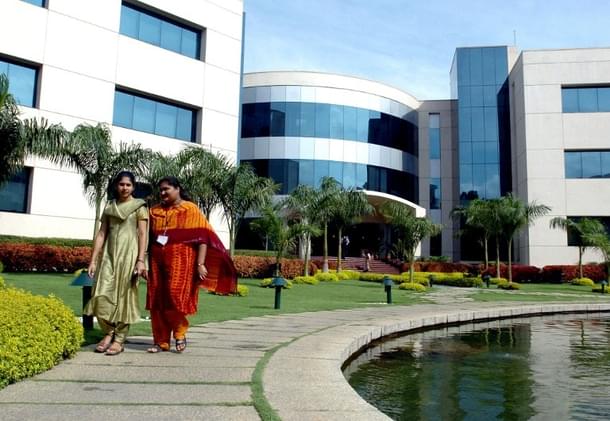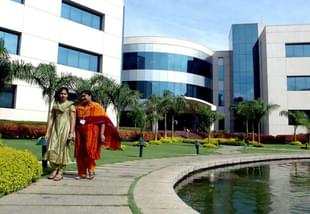Economics
Engineering Education: Has Massification Messed IT Up?
M Saravanan
Aug 14, 2015, 04:50 PM | Updated Apr 29, 2016, 12:33 PM IST
Save & read from anywhere!
Bookmark stories for easy access on any device or the Swarajya app.


With engineering colleges coming up all over the country in large numbers, has quality suffered at the hands of quantity? And where does that leave India’s IT sector?
“Indian IT party is over,” heralded a headline of an article on a news website recently. This was not coming from an “expert” of the industry, but a seasoned insider, Ravi Venkatesan, former chairman of Microsoft India and presently a director of one of India’s top IT firms, who has also predicted in the article that “India’s IT industry is unlikely to remain the amazing job engine that it has been.” Reasons identified are varied, mostly within the IT industry.
But the main problem lies outside the industry, and it is to do with the higher education sector in India, especially technical education.
Rosy Past
Though I am not from the IT industry, I could really not agree more with the author if random events happening around are any indication. In a jiffy, events that happened close to two decades ago flashed back in mind. Then, my seniors entering the post-secondary phase of education were vying with one another to gain a berth in either medical or engineering education, two precise pathways to dignified living and societal prestige. The fight for admittance into both the streams was ruthless. Not just for the aspiring students, but also equally, if not more, for the expectant parents. Best among the industrious and intelligent students would make it to engineering. Better than the best would proudly enter the citadels of medical institutions. Medicine was the emperor and engineering the king.
Sometime around the turn of the millenium, the situation turned topsy-turvy. Now, engineering education was the emperor, ably supported by a hungry lieutenant named IT industry. Engineering educational institutions proliferated, courtesy the private sector, which was getting well entrenched in both education and employment, primarily in the IT-led services sector. The reason was that medicine did not pay, or, pay as good as engineering, which cost less, in both time and money.
The battle for engineering seats vanished and was replaced by a reality where seats were available ‘across-the-counter.’ The best performing students now filled up top notch institutions that took the cream of the on-campus jobs, predominantly from the IT sector and the rest merrily accepting the ones left, again largely from the IT and related sector.
IT’s Still Strong
Now coming back to the prediction that the ‘IT party is over’. In terms of job creation, one only wonders, at least momentarily, as to how things came to such a pass for the engineers and the IT sector? Has anything gone terribly wrong?
No, on the contrary, the services sector including the IT sector is still growing. According to the Indian Economic Survey for 2014-15, the compounded annual growth rate of services sector was 8.7 per cent for the period 2001-13. For the same period, the share of services in GDP and employment increased from 51.3 to 57 per cent and 24 to 28 per cent respectively. Notwithstanding the continuing global slowdown, the services sector has retained its ability to contribute to economic growth and employment generation.
The report also paints a rosy picture about the IT sector:
“Software development and information technology enabled services is the single largest contributor to services exports…and continues to be one of the largest employers in the country, directly employing nearly 3.5 million people…computer and related services with a share of 3.3 per cent in India’s GDP grew by 14.4 per cent in 2013-14… the revenue of the IT-BPM industry at US$119 billion grew by 12 per cent in 2014-15, while the export market at US$ 98 billion grew by 12.3 per cent over the previous year”
Massification of Education
In terms of performance, nothing has drastically gone wrong with the IT sector. But something has really happened in the higher education, especially engineering education and that is the epicentre of the trouble. The enrolment in higher education including engineering massified at a faster clip than expected or planned.
From about 20 universities and 500 colleges in 1947, the numbers have grown to 190 universities and 7,350 colleges in 1990 and to 712 universities and 36,671 colleges in 2014. The Gross Enrolment Ratio (total enrolment expressed as a percentage of population belonging to 18-23 age cohort) for higher education remained around 5 per cent for long and grew from 5.01 in 1970 to 5.98 in 1991 (UNESCO). As per the Educational Statistics at a Glance 2014, the GER was modest around 8 per cent till 2000, post which it improved slowly to reach 10 per cent during 2004-05. It took off from that point to touch 11.6 per cent in the very next year itself, 2005-06, and reach 15 per cent by 2010 and 21.1 per cent by 2012-13.
Engineering Enrolment Gallops
The number of degree level engineering institutions increased from 337 units with an intake of 66,600 students in 1990 to 776 institutions with an intake of 1,85,758 students in 2000. In a space of ten years, the number of institutions more than doubled and the student intake nearly tripled. By 2005, the numbers grew to 1475 institutions with a student intake of 4,99,597. Again the numbers doubled, but within five years. By 2010, there were nearly 3000 institutions with an intake of 10,71,896. Again, the capacity doubled within five years, but the key difference is the higher base of institutions and students intake in 2005 compared to that of 2000.
During the period 2006-07 to 2011-12, the share of engineering faculty in the total enrolment soared 24.8 per cent to capture 25 per cent of the total pie, growing at the cost of Arts and Science faculties, which came down from 39.6 per cent to 30.2 per cent and 18.4 to 14 per cent respectively.
After 2005, the enrolment in higher education, including technical education, massified and the nation’s higher education system graduated from being ‘elite’ to ‘mass’ system. What matters is not just the massification, but also the unexpectedly fast pace at which it happened.
Massification Marring Innovation?
As the enrolment increased, investment into engineering education was primarily to provide access to the new aspirants. Quality of teaching and learning process did not receive adequate support. The Schumpeterian ‘creative destruction’ needs an ecosystem conducive for innovation. With increasing enrolment, inadequate investment and the resultant poor quality of teaching-learning process, it is only natural to end up having skills gap and unemployable graduates, a perfect recipe for stagnation and against innovation.
A 2014 report has estimated that 75 per cent of IT graduates are deemed ‘unemployable’. As the IT industry banks more on innovation, among other things, for growth, employees with cutting edge skills will be required to keep up the momentum of its growth and continuously innovate. With no ‘creative destruction’ happening in the Indian IT industry and the global recession undermining the comparatively more innovative developed nations, the ability of the Indian IT industry to increasingly create jobs has only waned.
The way forward is to focus on the quality of Indian higher education. This would, inter alia, include curriculum changes, adoption of ICT, strengthening academia-industry linkages, increasing public and private investment in higher education, faculty training and ushering in structural, governance and academic reforms.




